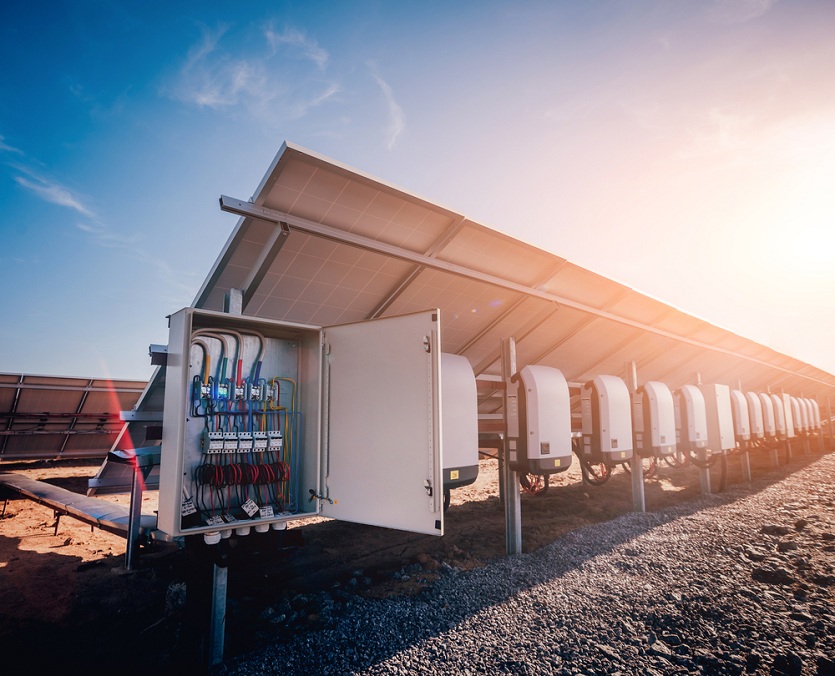If you are considering purchasing or installing a new solar power system, you may be wondering whether you really need that expensive inverter.
The quick answer is: YES, you need it.
A solar power inverter is one of the most important components of a solar system or kit.
It converts DC power from your solar cells and battery bank into AC power that can be used to power appliances or fed back to the grid.
But do you always need a solar power inverter? Can you set up a solar system without one?
In this post, we discuss when you need a solar power inverter and situations where you can skip it.
We also explain the different types of inverters in the market and how to size an inverter.
If you have any questions about solar inverters, drop us a comment below.
Do I Need A Solar Inverter For My Solar System?
Solar panels only produce DC electricity.
Batteries also only produce DC power.
So whether you have an off-grid, hybrid or grid-tie (without batteries) solar system, you are still dealing with a DC powered system.
So, if you want to supply AC power from your solar power system, then you definitely need a solar inverter. The two most common reasons include:
When Is A Solar Inverter Not Necessary?
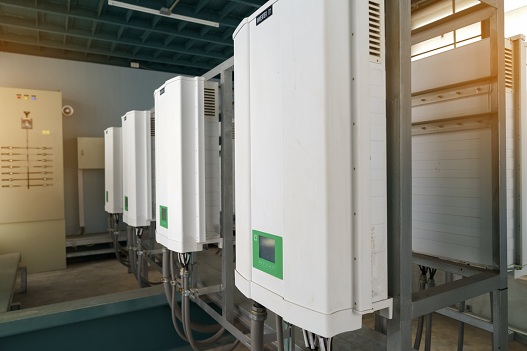
An inverter is not necessary if you only need DC power.
Say you want to power a DC tire air pump. In this case, you don't need AC electricity.
You can connect your air pump directly to your battery output without going through an inverter.
You also don't need to purchase an inverter if you are using solar power solely to recharge batteries (e.g. an RV, boat). Since most batteries store electricity in the form of direct current (DC) there’s no need to convert the electricity from the solar panels to AC. And most vehicles that supply AC power already have an inverter built into the electrical system.
But if you plan to run AC appliances or equipment directly off of the battery bank, then you’ll need an inverter to do that.
Do I Need A Separate Inverter for A Solar Generator?
The other situation where you don't need to purchase a separate AC inverter is if you are using a solar generator. This is because solar generators have a built-in inverter.
So you can connect solar panels directly to the solar generator and plug in your appliances without using an external inverter.
Types of Solar Power Inverters
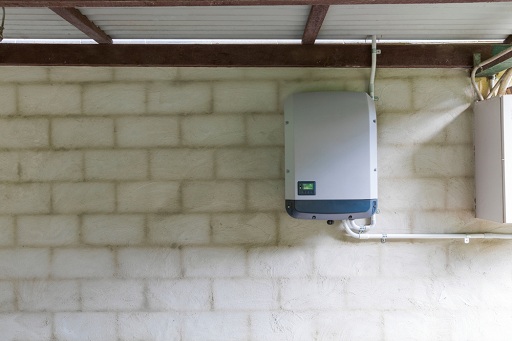
There are two types of inverters: string inverters and microinverters. Ity is important to understand the difference between these two types of inverters and when they are typically used.
1. String Inverters
A string inverter is the most well-known type of inverter. It’s a central inverter that accepts power from a string of solar panels and converts it into usable AC power.
In an off-grid system, the inverter is connected to the battery. It converts the stored DC solar power into AC electricity that can then be distributed to various loads.
In a grid-tie system, a string inverter is connected directly to the solar array. It converts incoming DC power into AC electricity that’s then supplied to the home’s power supply and to the grid.
Pros of String Inverters
Cons of String Inverters
Solar power optimizers can mitigate some of these downsides of string inverters.
A solar power optimizer is a DC to DC converter that connects to an individual solar module. It optimizes the output of each solar panel, and increases the total output of the string inverter.
A solar power optimizer is especially useful if some of your panels are occasionally shaded or face North.
Two of the most popular solar optimizer brands are SolarEdge and Tigo.
2. Microinverters
A microinverter is a smaller type of solar inverter that’s installed on the back of each solar panel. The microinverter converts each module’s DC output directly to AC power.
With microinverters, DC to AC conversion happens at the point of production. So the combined power you get from the array is already in AC form that can be supplied to the grid.
Microinverters are typically only used in grid-tie systems. They can also be used in off-grid solar systems, but set up can be a bit complicated and may require extra components like an inverter charger. Consult a professional technician if you want to use microinverters off-grid.
Pros of Microinverters
Cons of Microinverters
Other Types of Inverters
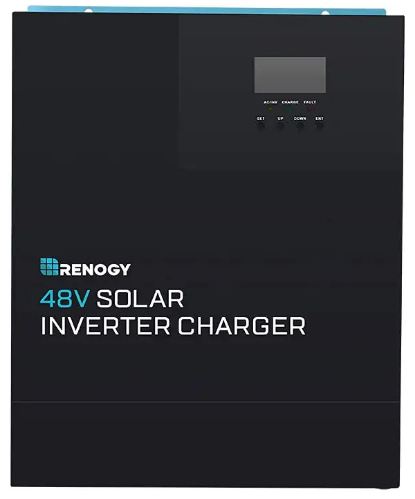
If you are going off-grid and plan to install the system yourself, consider getting an inverter charger. This type of inverter combines a regular string inverter and a battery charger into one unit.
The biggest advantage of an inverter charger is that you can charge your battery bank from multiple sources, both DC and AC.
When there’s no sun you can still charge your battery from a gas generator. The inverter charger converts AC power from the generator to DC power that can charge the battery bank.
The inverter charger also does the work of converting DC power from the batteries to AC power you can use for your appliances.
Another option is an all-in-one inverter like this one from Renogy. An all in one inverter contains an inverter, a solar charge controller, and a battery charger.
It reduces how much wiring you need to do.
You may also come across hybrid inverters, which are very similar to inverter chargers.
Hybrid inverters are designed for use with a hybrid solar system. The inverter delivers AC power to the grid and can also use AC power from the grid or a gas generator to keep the battery bank topped up.
In other words, it contains an inverter and an AC battery charger.
Pure Sine Wave vs. Modified Sine Wave Solar Power Inverters
Solar power inverters are also categorized based on their output.
Solar inverters nowadays are overwhelmingly pure sine wave. That’s because most equipment and appliances work best with this type of power.
Pure sine wave inverters produce clean, smooth, and reliable AC electricity. Sensitive electronics like modern TVs, medical equipment and appliances like microwaves require a pure sine wave inverter.
A grid-tie system also works only with a pure sine wave inverter, to ensure that the power produced matches grid power.
Modified sine wave inverters produce choppier, less smooth power.
Modified sine wave inverters are rarely used in modern solar systems. They can damage sensitive electronics or cause a hum in certain equipment.
How To Size An Inverter For Your Solar Power System
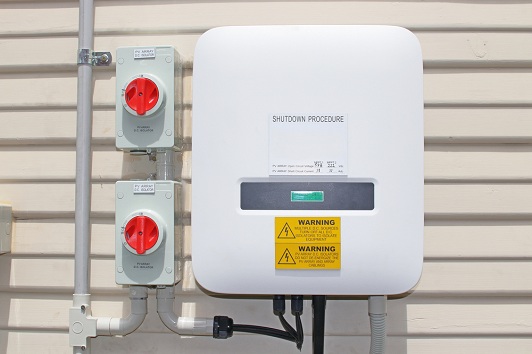
We have a more detailed write up about sizing your solar system, including the inverter, in a separate article.
Here’s a short explainer on how to choose the right inverter size for your system.
Off-grid and grid-tie inverters are sized differently.
In an off-grid system, the inverter size depends on your total power consumption. You need an inverter that can produce more power than you need at the same time.
If all your appliances draw 6500W of power at the same time, a 7000W or 7kW inverter is perfect for your system.
Things are different in a grid-tie system. Power draw doesn't matter here since the inverter doesn't supply power directly to your home.
Instead, the size of a grid-tie string inverter depends on the total output of your solar array. The output of your solar modules and the rating of the inverter need to match closely, but not exactly.
Experts recommend getting an inverter that’s rated a bit lower than the rated output of your solar array.
That’s because solar panels produce less than the rated output. So getting a slightly smaller inverter matches the two more closely, ensuring higher efficiency.
Ideally, the solar output to inverter size ratio should be 1.25 (e.g. a 4kW inverter for a 5kW solar array).
Don’t forget to match the voltage of your inverter (off-grid or grid tie) to the voltage of your solar system.
If you have a 24V solar system, get a 24V solar inverter. Same goes for 12V, 36V and 48V systems.
How To Install A Solar Power Inverter
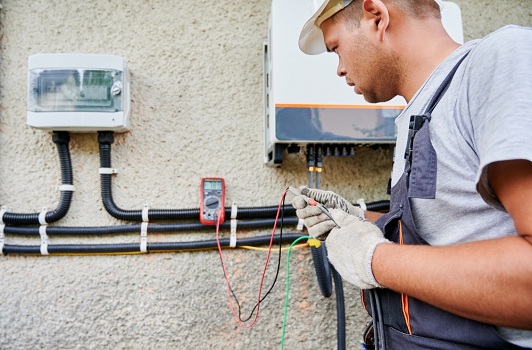
For a hybrid or grid-tie system, have a professional electrician hook up the inverter.
But for an off-grid system or solar kit, you can wire the inverter yourself if you know the basics of electrical wiring.
The inverter is the last thing in the system before power goes to the mains or loads. It comes after the battery bank.
The first step is to mount the inverter at the right location. It should be close to the battery bank so that you don't have to use long wires.
Be sure to check the manufacturer’s environmental specifications (temperature, humidity, moisture etc.) of the inverter when choosing where to mount it.
Once mounted, all you need to do is connect the negative lead from the battery to the negative port of the inverter and the positive lead to the positive port.
Some inverters have integrated outlets where you can directly plug in appliances.
If you plan to supply solar power to outlets and appliances throughout the house, you’ll need to connect the inverter to the breaker panel.
Make sure you use the right wire gauge depending on how much current will be flowing through the wires.
If you are not sure what you are doing or are comfortable doing this kind of wiring, we highly recommend hiring an electrician.
Bottom Line
If you need AC power from your solar system, whether to run appliances or feed to the grid, you definitely need a solar power inverter.
Your budget, the type of solar system you have, how much power it generates and how much power you consume will determine the type and size of inverter you get.

